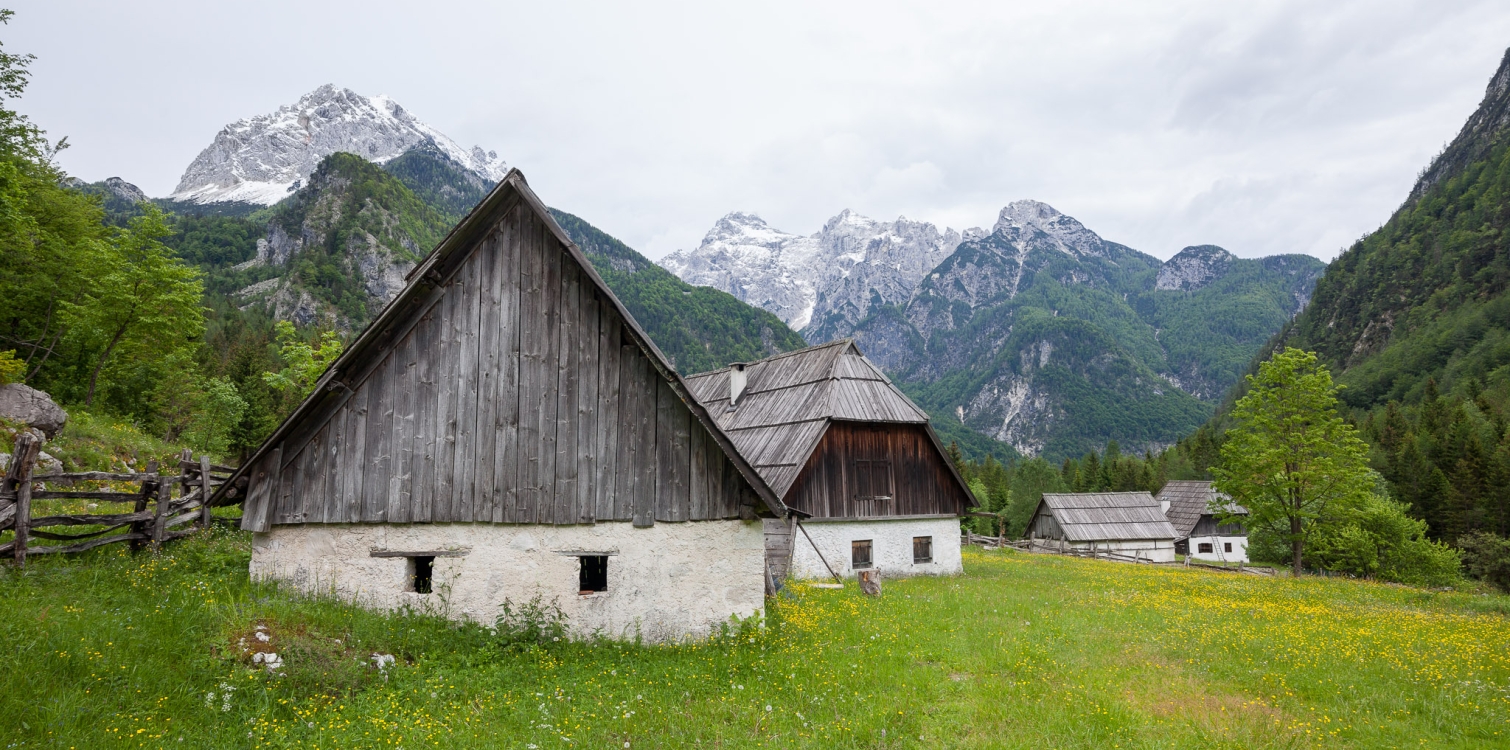The valleys of the Julian Alps and the people living in them are separated by high mountains. If people want to meet, they must take a long and difficult route over the mountains or an even longer one around them. If we draw a straight line on the map from Stara Fužina in Bohinj to Tolmin, the actual distance is just over 16 kilometers! However, because of the high mountains in between, driving from one place to the other requires traveling as much as 65 kilometers.

Triglav National Park and the Julian Alps can roughly be divided into the Primorska and Gorenjska parts. Traditional buildings on one side are clearly distinct from those on the other side.
The Primorska part- Bovec, Tolmin, Kobarid- shows a Mediterranean influence. This is no surprise, as the very name Primorska indicates a connection to the sea. Although we are in an alpine area where wood is abundant and commonly used as building material, there are more stone buildings in Primorska region than in Gorenjska.

Ethnologists have closely examined the characteristics of houses in the Julian Alps and identified common features among those that are similar. We refer to groups of buildings with shared characteristics as building types.

All the houses and other buildings that humans have constructed over the centuries in the mountains and valleys of the Julian Alps, as well as in other environments, testify to a certain way of life, reflecting human inventiveness, knowledge, and adaptation to the given natural conditions.
DO YOU KNOW?
- The journey from Tolmin to Bohinj around the mountains is nearly as long as the route from Ljubljana to the sea. The residents on both sides have thought a lot about how to shorten this distance. They built a railway. Constructing the railway was very challenging. Engineers and workers had to overcome numerous natural obstacles—from mountain barriers to rushing rivers and narrow valleys—and build dozens of tunnels and bridges. Now, there is also an auto train operating between the Primorska and Gorenjska region.
Thank you.

